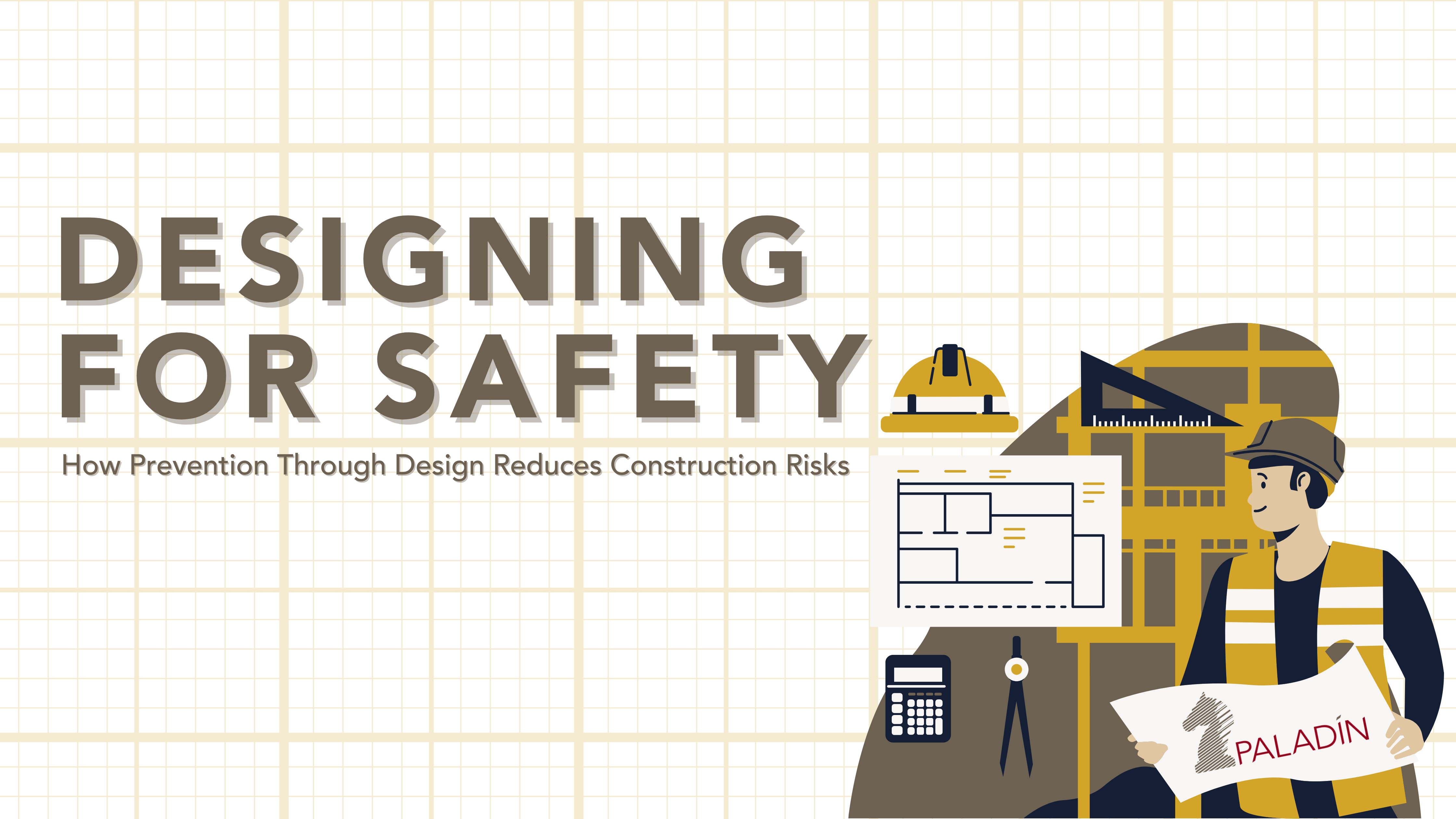By Mark Zoller, PE, CxA, LEED AP
Paladin Engineers

The notion that every accident is preventable is more than just a philosophy – it’s the foundational principle of every decision we make in building design and construction. Whether we’re engineers, architects, contractors or building owners, we all have a unique opportunity to set a safety baseline with thoughtful design choices long before ground is broken or equipment is installed.
Prevention through design certainly includes meeting code requirements, but its core commitment involves putting ourselves in the shoes of every person who will interact with a building – from construction workers and maintenance staff to daily occupants. This empathetic approach to design helps us anticipate and eliminate potential safety risks before they become real-world problems.
EARLY COLLABORATION IS KEY
The most effective safety solutions are the result of early and transparent collaboration between owners, designers, and contractors. Ideally, they flow from people-focused conversations during initial design phases, when we reflect on the human impact of equipment placement, access requirements, and installation methods. As a rule, this early coordination is more affordable than remedial attempts to address safety concerns after designs are finalized or construction has begun.
The collision of technical requirements and human needs tend to happen in mechanical rooms, especially if decision makers define success as simply ensuring minimum code clearances around equipment. Wise designers take things further by imagining how maintenance staff will actually work in that space and asking tough questions of themselves and others. Do they have room for their tool cart? Can they safely access all service points? Is there a clear path to remove and replace heavy components? These practical considerations are foundational in the cultivation of a safety culture.
BETTER LIVING THROUGH TECHNOLOGY
Fortunately, that cultivation has gotten a bit easier thanks to technology that has revolutionized our ability to reduce safety issues through design. For example, modern building information modeling (BIM) systems allow us to examine equipment clearances, service access, and installation paths in three dimensions for clear understanding. Contractors can use the resulting, detailed models to fabricate components in their controlled workshop environments, reducing on-site assembly time and associated risks. When components arrive pre-fabricated to precise specifications, installation becomes more efficient and inherently safer.
Thoughtful collaboration is not without its challenges and complexities as the team navigates trade-offs on the way to safety-conscious design. Consider the challenges of accessing rooftop equipment: While a freight elevator might be the safest solution, budget constraints might make one impractical. Rather than compromising on the search for a safe, budget-wise solution, collaborators must become creative with their approaches. For example, a ship’s ladder combined with a hoist system for equipment might be an entirely acceptable solution. After all, the goal isn’t to eliminate all risk (that’s impossible), but to find creative solutions that maintain safety while working within project constraints.
THE OWNER’S VOICE
The most robust safety cultures begin with the owner’s commitment and flow through every aspect of design and construction. When owners understand that investing in safety-conscious design can reduce insurance premiums, minimize litigation risk, and create more efficient operations, they’re more likely to support these initiatives. This commitment then enables designers to choose solutions that might cost more up front but provide long-term benefits in safety and maintainability.
Achieving a suitable level of prevention through design requires continuous learning and mentorship from the most experienced members of each team. While codes and standards certainly provide important guidelines, there’s no substitute for experienced professionals sharing their knowledge about what works – and what doesn’t – in real-world applications. That’s why every project can serve as a learning opportunity to improve safety through design.
THE HUMAN FACTOR
At the end of the day (and the beginning and middle), people are the most important part of any building. When we design with this principle in mind, considering human factors in every decision, we create spaces that are not just functionally efficient but also fundamentally safer for everyone who interacts with them.
Prevention through design isn’t just about avoiding accidents – it’s about creating environments where people can work effectively, maintain systems efficiently, and operate safely throughout the building’s lifecycle.
While this approach requires more effort during design phases, the returns – in the form of reduced incidents, improved efficiency, and better building performance – make it well worth the investment. As we say at Paladin, the best safety solution is the one that prevents problems from occurring in the first place.
